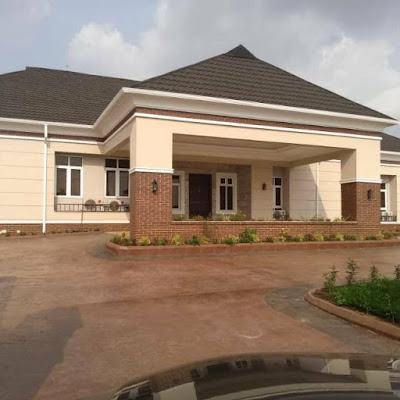Iron Oxide Pigments for Brick Production.
 |
| RED BRICKS MADE FROM IRON OXIDE PIGMENT |
Colouration is a basic device for designing objects including bricks. The beauty of bricks is usually enhanced with the right pigmentation. A pigment is a matter that alters or enhances the colour of any object as an outcome of absorption. Pigmentation in bricks is very vital in the sense that it changes dull objects into an eye catching marketable product.
Iron oxide pigments are matters that are not toxic and can resist harsh weather. There are two types of iron oxide pigments which have always been the main colour used in brick colouration…Synthetic and Natural Iron Oxide.
Natural Iron Oxides contains ferrous oxides, clay and manganese. Asides these two types, Chromium Oxide pigment are used to manufacture shades of green, Cobalt blue for blue shades. Chromium, Cobalt and Iron Oxides are long lasting, static and a proven stout resistant to weather conditions and sunlight.
The dominant colours of Iron Oxides are black, yellow and red; but by mixing two or three of these dominant colours, one can have shades of yellowish-beige, brown, orange, golden, maroon and tan.
The Synthetic iron oxides are high in colour tincture level which can give a more coloured bricks by addition of 1% to 5% colour to the white or grey cement being used. The mass of colour addition depends on the shade of colour one wants.
Darker black colours are produced by Carbon Black or Lamp Black pigment which is used in bricks production due to its high colouring tendencies. Carbon Black is a much smoother, finer and lighter colouring pigment than iron oxides. It is rarely used in brick production because it eventually fades out due to the fact that it can’t withstand harsh weather conditions.
There are various factors that can affect the final colouration in brick production.
Water ratio to the cement ratio: when mixing the cement with water, the colour of the solution will either lighten when much water is added or the colour will be a darker shade when less water is added.Curing: the level of hydration influences final colouration in bricks which in turn affects their final colour. Minimum time of 2hours is required for colouration in bricks to allow the colours to set properly before starting the curing process.
The mass of shade and fineness: with cements, the mass of shade will alter the colour in a brick product. A light mass will give a much brighter and fierce colour. Also, a darker mass will dull the colour shade. Aggregate mixing with more fines can also dull the colour shade because of the expanded area the pigment is expected to cover with pigment molecules.
Cement Shade: the greyness and whiteness of cement colour changes from location to location and also among different manufactures. These changes can influence different colour shades in bricks production. E.g. the use of light coloured grey cement will bring about a yellowish-beige colour while the use of buff pigments with darker cement will bring about a dirty yellowish-beige colour.
It takes more care and regularity to produce uniformed coloured bricks. With the rise in brick production, producers and masonry contractors have and are still learning unique ways in brick pigmentation in order to offer uniformed products.

